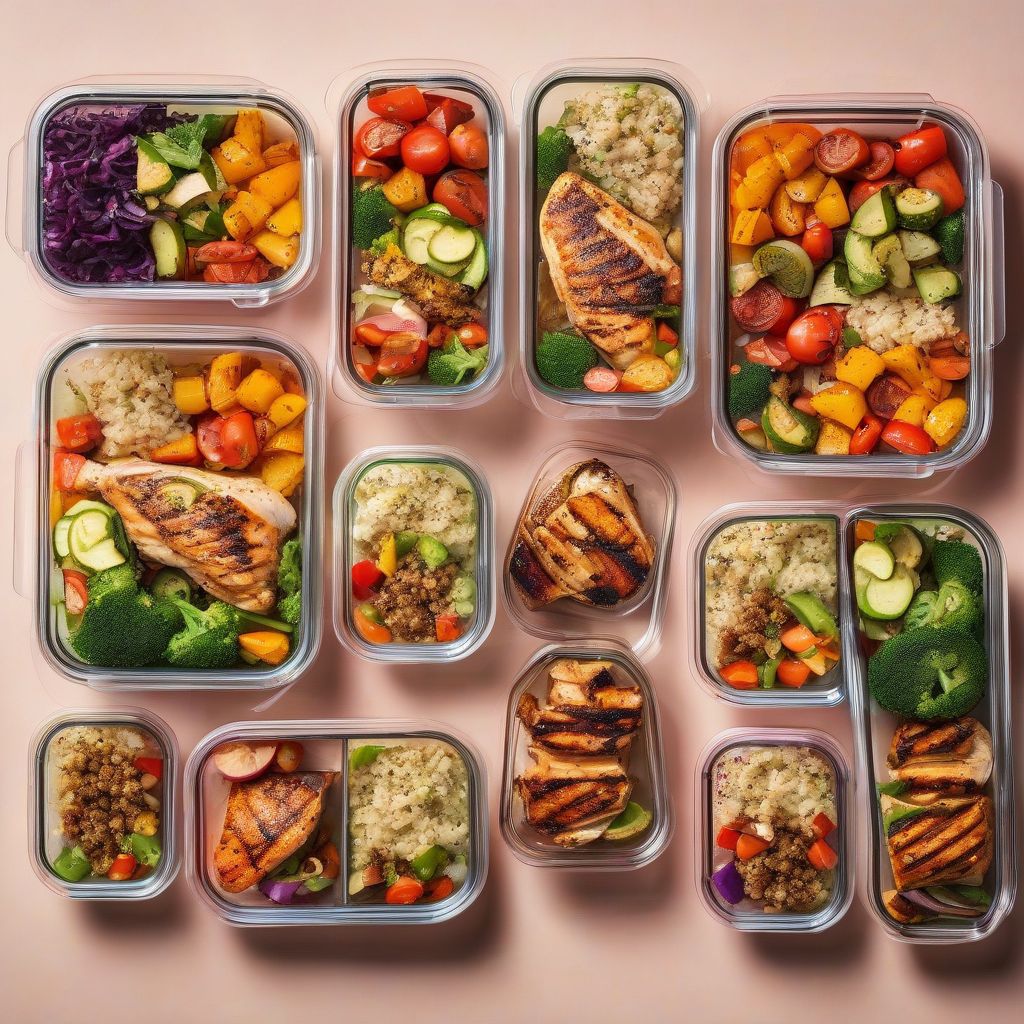Have you ever felt the Sunday meal prep blues? You spend hours cooking, only to face a week of the same lunch and dinner. While meal prepping is a fantastic tool for healthy eating, falling into a monotonous routine can quickly lead to boredom and even nutritional deficiencies. So, how do we reap the rewards of meal prep without sacrificing flavor and, more importantly, a balanced diet? The answer lies in embracing variety. In this article, we’ll explore the crucial role of variety in meal prepping, offering practical tips and strategies to make your weekly meals exciting and nutritious.
Why is Variety in Meal Prep So Important?
Variety isn’t just the spice of life; it’s essential for optimal health. A diverse diet ensures you receive a broad spectrum of nutrients, supporting everything from energy levels and immune function to gut health and mood.
Nutritional Completeness
Different foods offer different vitamins, minerals, and antioxidants. Eating a variety of foods helps ensure you’re not missing out on key nutrients. For instance, leafy greens are packed with vitamin K, while citrus fruits are rich in vitamin C. By incorporating a rainbow of colors into your meal prep, you’re more likely to meet your daily nutritional needs.
Preventing Nutrient Deficiencies
Monotonous meal prep can lead to nutrient deficiencies over time. For example, relying solely on chicken breast for protein might leave you short on iron and zinc, which are abundant in red meat. Variety helps prevent these deficiencies by exposing your body to a wider range of nutrients.
Avoiding Food Boredom and Promoting Consistency
Let’s face it, eating the same meal day in and day out can get tedious. This boredom can lead to unhealthy cravings and ultimately derail your healthy eating efforts. Variety keeps your meals interesting, making you more likely to stick to your meal prep routine long-term.
Supporting Gut Health
A diverse diet promotes a healthy gut microbiome, which plays a critical role in digestion, immunity, and overall well-being. Different foods feed different gut bacteria, and a balanced microbiome is a thriving microbiome.
Practical Tips for Incorporating Variety into Your Meal Prep
Now that we understand the importance of variety, let’s explore how to put it into practice:
The “Mix and Match” Method
Prepare a few different protein sources, carbohydrates, and vegetables, then mix and match them throughout the week. For example, roasted chicken, grilled salmon, quinoa, brown rice, steamed broccoli, and roasted sweet potatoes can be combined in numerous ways, creating diverse and satisfying meals.
Explore Different Cuisines
Draw inspiration from global cuisines. One week might feature Mediterranean flavors, while the next explores Asian or Mexican dishes. This not only introduces new flavors but also expands your culinary horizons.
Seasonal Eating
Embrace seasonal produce. Not only is it fresher and more flavorful, but it also naturally introduces variety into your meal prep. Visit your local farmer’s market for inspiration.
The “Theme Day” Approach
Designate specific theme days to keep things interesting. “Meatless Monday,” “Taco Tuesday,” or “Stir-fry Friday” can inject fun and variety into your weekly routine.
Don’t Forget Healthy Fats and Flavor Boosters
Healthy fats and flavor boosters are your secret weapons. Nuts, seeds, avocado, olive oil, herbs, spices, and citrus juices can elevate simple dishes and prevent flavor fatigue.
Plan Ahead and Make a List
Plan your meals for the week, considering variety in protein sources, carbohydrates, vegetables, and flavors. Create a grocery list based on your plan to ensure you have everything you need.
Addressing Common Concerns About Variety in Meal Prep
Many people worry that variety equates to complexity and time. However, with some planning and smart strategies, it can be surprisingly simple.
“Variety takes too much time.”
Batch cooking core ingredients, like roasted vegetables and grains, can save time. Then, customize these basics with different sauces, spices, or protein additions throughout the week.
“I don’t know where to start.”
Start small. Introduce one new recipe or ingredient each week. Gradually expand your repertoire, and before you know it, you’ll have a wide range of meal prep options.
“I’m on a budget.”
Variety doesn’t have to be expensive. Frozen fruits and vegetables are often more affordable than fresh and just as nutritious. Legumes, beans, and lentils are also budget-friendly protein sources.
 Meal Prep Variety
Meal Prep Variety
Conclusion
Variety is not just a desirable addition to your meal prep routine; it’s a cornerstone of healthy eating. By incorporating a diverse range of foods, you ensure optimal nutrition, prevent boredom, and promote long-term adherence to your health goals. Remember, meal prepping shouldn’t feel like a chore. Embrace the opportunity to explore new flavors, experiment with different cuisines, and enjoy the journey towards a healthier, more vibrant you. Start small, plan ahead, and remember that even simple changes can make a big difference.
What are your favorite ways to add variety to your meal prep? Share your tips and ideas in the comments below!



